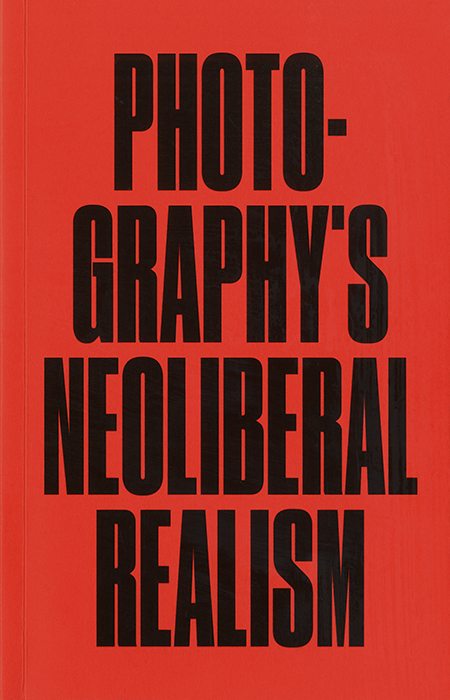| SIMON DENISON IMAGE & TEXT |
| PREVIOUS | NEXT |
PHOTOGRAPHY'S NEOLIBERAL REALISM Jörg Colberg MACK, 2020 ISBN 978-1-913620-16-5 Pb
In this short pamphlet, Jörg Colberg argues that ‘through advertising and the visuals of glossy magazines’ we are subjected to relentless propaganda for neoliberal capitalism, in a way that parallels the communist propaganda delivered by socialist realism in Stalin’s USSR and elsewhere; hence the title. Colberg wants us to wake up and take notice of what he sees as a malign phenomenon that works ‘against the best interests of the majority of the population’. The idea is not, itself, new; and there is much to be said for Colberg’s point that people should open their eyes and notice the ideologies and values implicit in the image world that surrounds them. Rather than focus on advertising, however, Colberg takes aim at three well known photographers, Annie Leibovitz, Gregory Crewdson and Andreas Gursky, describing them as ‘the main proponents’ of the phenomenon. All three are working ‘in the service of’ the neoliberal system, Colberg declares. The ‘implicit purpose’ of their work is ‘propping up global liberal capitalism and its consequences, namely vast inequality in increasingly fractured societies’. The logic behind Colberg’s claim that these three are, above all others, determined advocates for capitalism is hard to follow. Much of the pamphlet is devoted to a loose critique of Leibovitz’s pictures on grounds of alleged racism and sexism, which – even if the allegations were plausible – would seem to be a separate issue. Her portraits are justly said to be ‘celebratory’ of people who have achieved success in arts, music, sport, politics and other fields; but it is unclear why such celebrations connote support for capitalism as such. Are successful people not celebrated in other political economies? Part of the problem for Colberg, it seems, is that the wrong sorts of people are celebrated. All ‘actual heroes’ are excluded, he claims, ‘such as someone who ran into a burning building to save a child’. It is uncertain why these different types of meritorious people are seen as mutually exclusive. Crewdson’s work depicts the ‘malaise and disaffection’ experienced by many within Western societies, Colberg writes. On those or similar grounds, Crewdson is typically read as offering a critical commentary on contemporary conditions. But for Colberg, the implicit pro-capitalism message in the work is that when people fail, ‘it’s not the system’s fault – it’s the individual’s fault’. To me, this interpretation of Crewdson’s uncanny images, evocative of a range of existential fears and yearnings, seems perverse as well as forced and simplistic. Similar points apply to the account of Gursky, whose work is, with reason, said to evoke a capitalist world in which individuals are reduced to insignificance by the scale of global economic forces. But for Colberg, Gursky is neither observer nor critic, but capitalism’s chief of police, convincing his audiences that ‘resistance is futile’. It seems more likely to me that audiences will approach his work armed with their own critical perspectives and value systems, and that some will go away determined to try and create a different kind of future from the one they see represented in the work. Colberg is explicit that he is engaged in a ‘political fight’ against neoliberal capitalism, and ends with the demand that, to win the fight, we must all learn to read images ‘collectively’ and ‘equally’; that is, the same way. By this I think he means that we should all see capitalist propaganda wherever we look. But most audiences, I hope, are more discriminating than he gives them credit for. |
 |
|---|---|